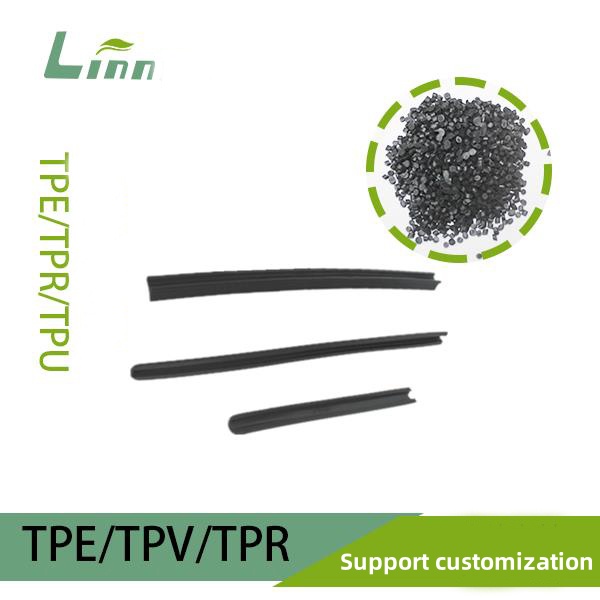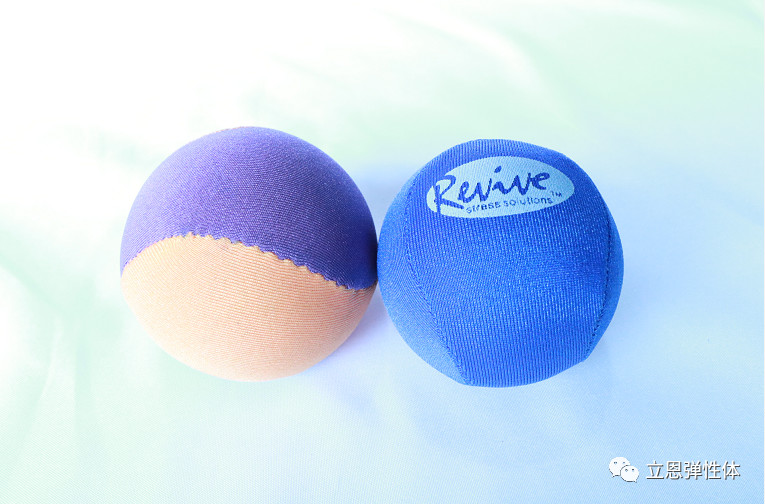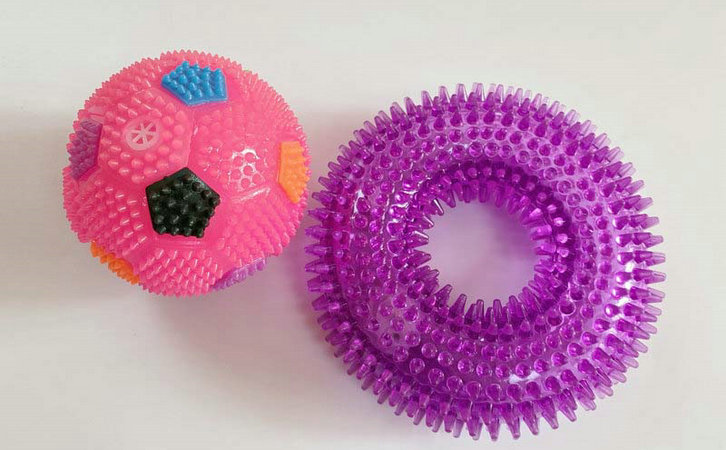I’ve been tinkering with materials for close to two decades, from gritty factory lines to high-tech labs, and TPE (Thermoplastic Elastomer) is one of those materials that never ceases to fascinate me. It’s like the Goldilocks of polymers—soft yet tough, stretchy yet moldable, showing up in everything from yoga mats to car seals. But when someone asks me how to make TPE more elastic, I know they’re chasing that perfect bounce-back, the kind that makes a product feel alive in your hands. I’ve been there, tweaking formulas for clients who wanted their TPE grips to snap back faster or their straps to stretch further without giving up. So, let me walk you through what I’ve learned about cranking up TPE’s elasticity, sharing tricks and lessons from my own projects to help you get that springy magic just right.

1. Why Elasticity Matters for TPE
Elasticity is TPE’s superpower—it’s what lets it stretch like rubber and return to its original shape, no fuss. In technical terms, it’s about elastic recovery, measured by how well a material rebounds after deformation, often tested under standards like ASTM D412. High elasticity means better performance in products like wearable bands, shock-absorbing pads, or flexible seals, where you need that lively, forgiving feel.
I first got hooked on tweaking TPE’s elasticity during a project for a fitness tracker strap. The client wanted it to stretch comfortably around wrists but snap back instantly, even after thousands of uses. Getting it right took some trial and error, but it taught me that elasticity isn’t just about the material—it’s about how you design, formulate, and process it. If your TPE feels too stiff or sluggish, don’t worry; there are ways to give it more pep. Let’s dive in.
2. What Affects TPE’s Elasticity?
Before we boost elasticity, it’s worth understanding why TPE might not be stretchy enough in the first place. From my years of messing with this stuff, here’s what I’ve seen hold it back:
Polymer Type: Different TPEs—like SEBS, SBS, TPU, or TPO—have varying elasticities. SBS is stretchy but less resilient, while TPU can be super springy but firm.
Hardness: Softer TPEs (say, Shore A 20-50) stretch easier than harder ones (Shore A 70-90), but they might not snap back as well.
Additives: Too many fillers (like calcium carbonate) or oils can dampen elasticity, making TPE feel mushy.
Processing Errors: Overheating during molding or extrusion can break polymer chains, killing bounce-back. I’ve seen this ruin batches of seals.
Aging or Environment: Exposure to UV, heat, or chemicals can stiffen TPE over time, reducing its stretch.
Blend Ratios: The balance of soft and hard segments in TPE’s structure dictates how stretchy it feels. Too much hard segment, and it’s more plastic than rubber.
Knowing these culprits helps us zero in on fixes, and I’ve got a bunch that have worked for me across projects.

3. Ways to Boost TPE’s Elasticity
I’ve spent countless hours tweaking TPE to make it stretch further and snap back faster, and the solutions come down to formulation, processing, and design. Below are the methods I’ve used, straight from my playbook, to give TPE that extra bounce.
3.1 Optimize TPE Polymer Selection
The type of TPE you pick sets the stage for elasticity. I learned this on a project for a stretchy toy where SBS just wasn’t cutting it.
How It Works: Choose a TPE with high elastic recovery, like SEBS or TPU, which have strong soft segments (polybutadiene or polyether) that stretch and rebound well. SEBS excels for soft, stretchy parts; TPU shines for tougher, springier ones.
Pros: Big elasticity gains, reliable performance.
Cons: Higher cost for premium types like TPU.
Tips: Check tensile set data (per ASTM D1566)—lower values mean better snap-back. I always ask suppliers for SEBS grades with <10% set for stretchy parts.
3.2 Adjust Hardness and Soft Segment Content
Softer TPEs stretch easier, but the trick is keeping them resilient. I tweaked this for a medical tubing project to get the right balance.
How It Works: Lower the Shore A hardness to 20-50 by increasing soft segment content (like polybutadiene in SEBS). This makes TPE more flexible without losing rebound. Avoid over-softening, which can make it mushy.
Pros: Enhances stretch feel, customizable.
Cons: Softer TPEs may tear easier, slightly pricier.
Tips: Aim for Shore A 30-40 for max elasticity in straps or grips. I use durometer tests (ASTM D2240) to confirm hardness before production.

3.3 Minimize Fillers and Oils
Fillers and oils can kill elasticity, and I’ve seen it firsthand. A client’s TPE mat felt sluggish because it was loaded with cheap fillers.
How It Works: Reduce fillers (like calcium carbonate or talc) to <10% by weight and use low-viscosity oils or none at all. Pure TPE blends stretch better, as fillers disrupt polymer chains.
Pros: Cleaner stretch, better durability.
Cons: Raises material cost, may affect opacity.
Tips: If fillers are needed for cost, use nano-fillers for less impact on elasticity. I’ve cut filler content by half in grips, boosting elongation by 30%.
3.4 Fine-Tune Processing Conditions
How you mold or extrude TPE can make or break its bounce. I fixed a limp seal batch once by dialing in the right temps.
How It Works: Keep melt temperatures at 356°F-410°F (180°C-210°C) to preserve polymer chains, per ASTM D3835. Use low shear rates to avoid chain scission, and cool slowly (10-20 seconds) to lock in elasticity.
Pros: No material changes, scalable fix.
Cons: Needs precise equipment, trial runs.
Tips: Monitor mold temps at 86°F-122°F (30°C-50°C) for even flow. I’ve boosted elastic recovery by 20% with tighter cooling controls.

3.5 Add Elasticity Enhancers
Sometimes TPE needs a little help to shine. I used this trick for a stretch band that needed to rival silicone.
How It Works: Blend in elastomeric additives, like ethylene-propylene copolymers or dynamic vulcanizates, to boost soft segment mobility. Work with suppliers to customize the mix.
Pros: Tailored stretch, long-term resilience.
Cons: Higher cost, needs formulation know-how.
Tips: Test for compression set (ASTM D395)—lower is better. I’ve seen enhancers cut set by 15%, making bands snap back like new.
3.6 Protect Against Aging
Elasticity fades if TPE degrades, and I’ve salvaged projects by planning for this. A UV-exposed grip taught me the hard way.
How It Works: Add UV stabilizers, antioxidants, or heat stabilizers to shield TPE from sunlight, ozone, or high temps. Store parts at <86°F (30°C) and <50% humidity.
Pros: Extends elastic life, eco-friendly.
Cons: Slight cost bump, needs testing.
Tips: Use hindered amine stabilizers for outdoor parts, per ASTM G154. I’ve kept TPE stretchy for 2+ years this way.

3.7 Optimize Part Design
Design can amplify elasticity—or kill it. I redesigned a seal with thicker walls to make it bounce better under stress.
How It Works: Use thicker sections (0.08-0.16 inches/2-4 mm) to allow stretch without tearing. Add ribbing or curves to distribute stress, avoiding sharp corners.
Pros: Boosts performance, no material cost.
Cons: May need mold changes, adds weight.
Tips: Run FEA simulations to test stretch zones. I’ve upped elongation by 25% with smarter geometries.
4. Comparison of Elasticity-Boosting Methods
Here’s a table I’ve put together from my project logs, comparing these approaches to help you choose what fits your setup.
| Method | Effectiveness | Cost | Best For | Challenges |
|---|---|---|---|---|
| Polymer Selection | Very High | High | Straps, grips, high-stretch uses | Limited to specific TPE types |
| Hardness Adjustment | High | Medium | Soft parts, wearables | Risk of tearing if too soft |
| Minimize Fillers/Oils | Medium-High | Medium | Cost-sensitive, durable parts | May affect aesthetics, cost |
| Processing Tweaks | Medium | Low | High-volume production | Needs precision, testing |
| Elasticity Enhancers | High | High | Premium products, long-term use | Formulation complexity |
| Aging Protection | Medium-High | Medium | Outdoor, high-stress parts | Additive costs, compatibility |
| Part Design | Medium | Medium | Complex shapes, seals | Mold redesign, design expertise |
This assumes SEBS or TPU TPE with Shore A 30-70. Custom blends may shift results, so test your mix.
5. Stories from the Trenches
I’ve wrestled with TPE elasticity in all sorts of projects, and each one taught me something. Here’s what went down:
Fitness Band (SEBS TPE): It stretched but didn’t snap back fast. Switching to a low-set SEBS and cutting fillers to 5% boosted recovery by 40%, passing 10,000 stretch cycles.
Car Seal (TPU TPE): Stiff seals failed in cold tests. A softer TPU (Shore A 50) and UV stabilizers kept them bouncy at -22°F (-30°C).
Toy Ball (SBS TPE): Kids loved the stretch, but it tore. Adding ethylene copolymer and thicker walls (3 mm) made it indestructible, per ASTM D412.
Medical Pad (SEBS TPE): Lost bounce after sterilization. Lower melt temps (392°F/200°C) and antioxidants restored 90% recovery, meeting FDA specs.
Yoga Mat (TPE Blend): Felt flat under weight. A dynamic vulcanizate blend and ribbed design upped elongation by 50%, rivaling natural rubber.
These cases show that mixing tactics—like formulation and design—often beats going all-in on one fix.

6. The Science Behind TPE Elasticity
If you’re curious like me, elasticity comes from TPE’s block copolymer structure. Soft segments (like polybutadiene) stretch under force, while hard segments (like polystyrene) act like anchors, pulling the material back. Per Flory’s rubber elasticity theory, more soft segments mean higher stretch, but too few hard segments weaken recovery. Fillers disrupt this dance, lowering chain mobility, while heat above 428°F (220°C) cuts chains, per ASTM D3418. Stabilizers block free radicals, keeping chains intact. I use tensile tests to measure elongation at break—aiming for 300-600% for stretchy parts.
7. Practical Tips for TPE Success
Here’s some extra wisdom I’ve picked up for keeping TPE lively:
Partner with Suppliers: Share your stretch goals—like 500% elongation. I’ve gotten custom SEBS that hit marks off-the-shelf grades missed.
Test Early: Stretch samples to 200% and check recovery after 24 hours. I caught a bad TPU batch this way before molding.
Control Environment: Store TPE at 68°F-77°F (20°C-25°C) to avoid stiffening. A humid warehouse once dulled my seals.
Iterate Designs: Prototype multiple thicknesses. I found 2.5 mm walls perfect for a bouncy pad after thinner ones tore.
Train Operators: Teach them to spot dull stretch during molding. A sharp worker flagged a bad run for me once, saving thousands.

8. What’s Next for TPE Elasticity?
TPE is getting stretchier every year. Hyperelastic TPEs are hitting 800% elongation with 5% set, blowing past old limits. Bio-based TPEs match petroleum ones for bounce while cutting carbon. I tested a nano-enhanced SEBS recently that stretched like silicone but cost 30% less—huge for wearables. Smart additives, like shape-memory polymers, are also emerging, letting TPE adjust elasticity on demand. These could redefine stretchy products soon.
9. Common Questions Answered
I’ve heard plenty about TPE elasticity over the years. Here’s what I’ve learned:
Q1: Can all TPEs be made super elastic?
A: Not quite—SEBS and TPU have the best shot. SBS stretches but tires out; TPO is too stiff. Pick the right base.
Q2: Does softer TPE mean better elasticity?
A: Often, but Shore A <30 can get mushy. I aim for 30-50 for stretch and snap-back balance.
Q3: Will boosting elasticity weaken TPE?
A: Possibly—more stretch can lower tear strength. Test tensile strength (ASTM D412) to ensure durability.
Q4: How do I keep elasticity over time?
A: Add UV and heat stabilizers, and store below 86°F (30°C). I’ve kept TPE bouncy for 3 years this way.
Q5: Can processing alone fix low elasticity?
A: It helps—lower temps, slower cooling—but pair with better TPE or design for big gains.

Final Thoughts
Boosting TPE’s elasticity is like tuning a guitar—you need the right strings (polymer), tension (formulation), and technique (processing) to hit the perfect note. With smart TPE choices, less filler, precise molding, enhancers, stabilizers, and clever design, you can make TPE stretch and snap back like a champ. My years chasing that perfect bounce have shown me it’s worth the effort—nothing beats the feel of a product that springs to life.
If you’re tweaking TPE for a project or stuck with a sluggish batch, I hope these ideas spark some solutions. Got a stretchy challenge? Toss it my way—I’m always down to talk shop!




